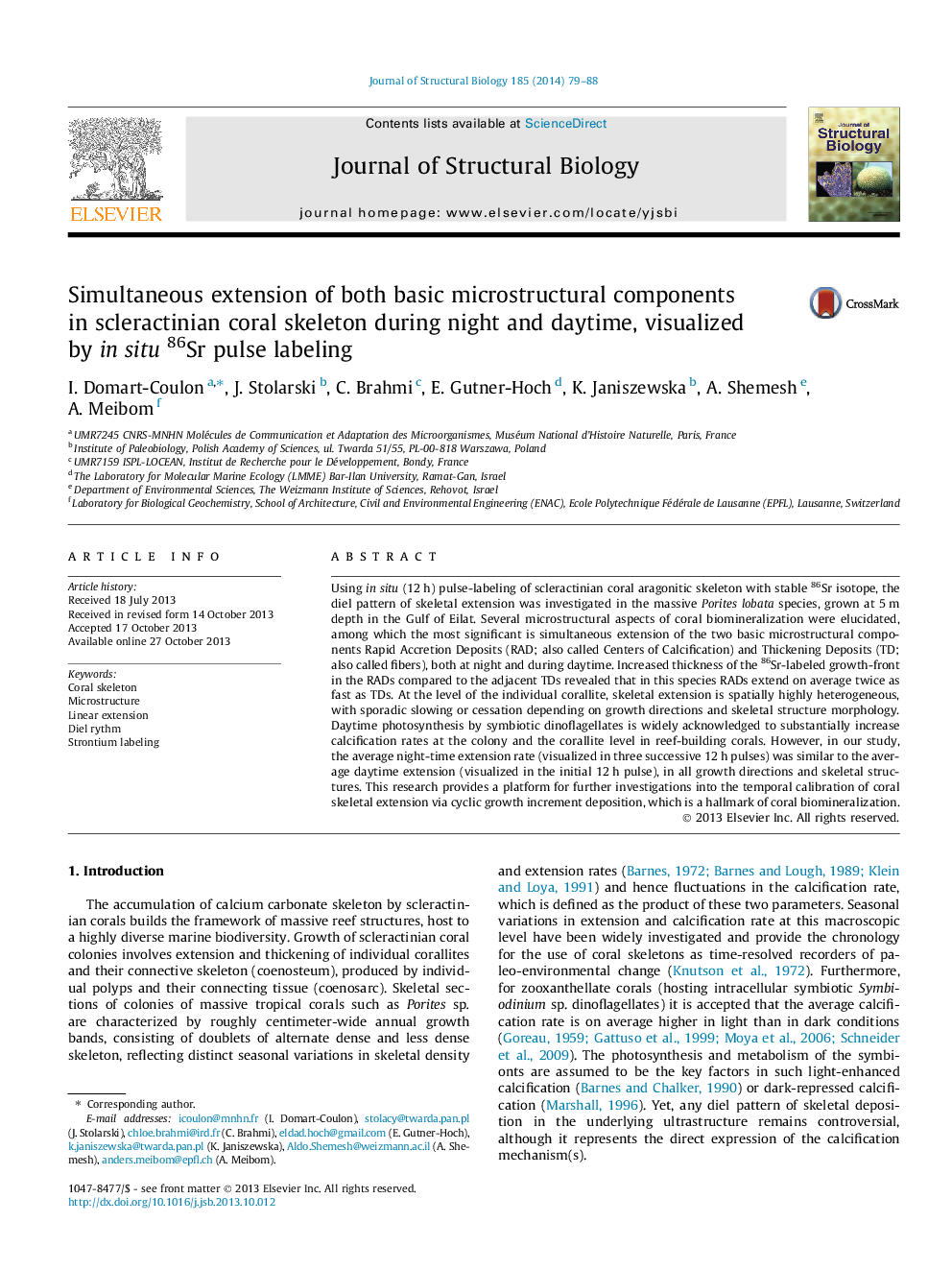| Article ID | Journal | Published Year | Pages | File Type |
|---|---|---|---|---|
| 5914200 | Journal of Structural Biology | 2014 | 10 Pages |
Abstract
Using in situ (12Â h) pulse-labeling of scleractinian coral aragonitic skeleton with stable 86Sr isotope, the diel pattern of skeletal extension was investigated in the massive Porites lobata species, grown at 5Â m depth in the Gulf of Eilat. Several microstructural aspects of coral biomineralization were elucidated, among which the most significant is simultaneous extension of the two basic microstructural components Rapid Accretion Deposits (RAD; also called Centers of Calcification) and Thickening Deposits (TD; also called fibers), both at night and during daytime. Increased thickness of the 86Sr-labeled growth-front in the RADs compared to the adjacent TDs revealed that in this species RADs extend on average twice as fast as TDs. At the level of the individual corallite, skeletal extension is spatially highly heterogeneous, with sporadic slowing or cessation depending on growth directions and skeletal structure morphology. Daytime photosynthesis by symbiotic dinoflagellates is widely acknowledged to substantially increase calcification rates at the colony and the corallite level in reef-building corals. However, in our study, the average night-time extension rate (visualized in three successive 12Â h pulses) was similar to the average daytime extension (visualized in the initial 12Â h pulse), in all growth directions and skeletal structures. This research provides a platform for further investigations into the temporal calibration of coral skeletal extension via cyclic growth increment deposition, which is a hallmark of coral biomineralization.
Related Topics
Life Sciences
Biochemistry, Genetics and Molecular Biology
Molecular Biology
Authors
I. Domart-Coulon, J. Stolarski, C. Brahmi, E. Gutner-Hoch, K. Janiszewska, A. Shemesh, A. Meibom,
